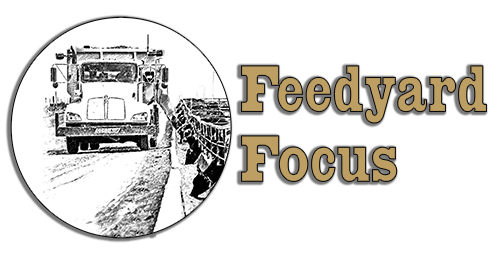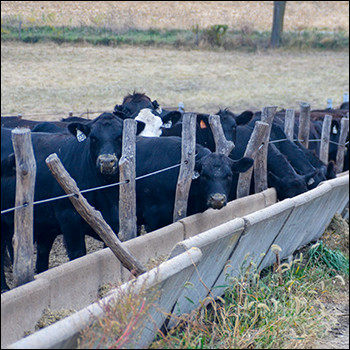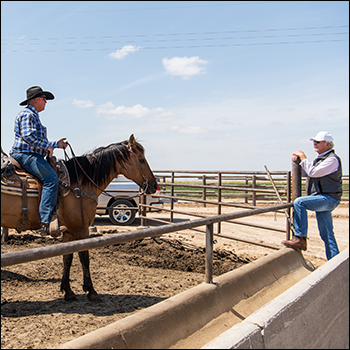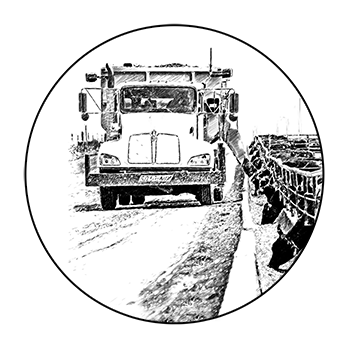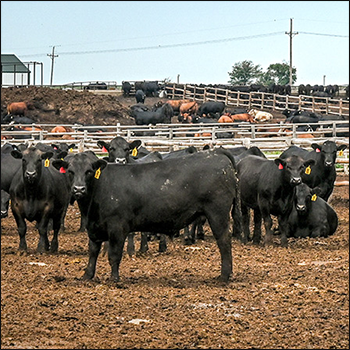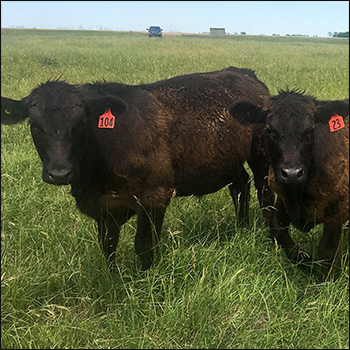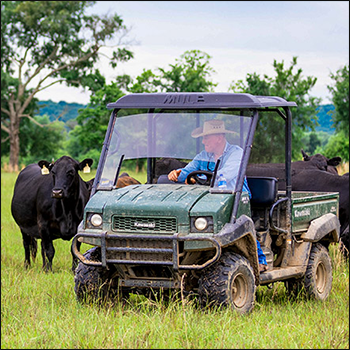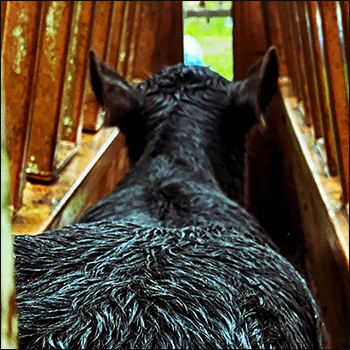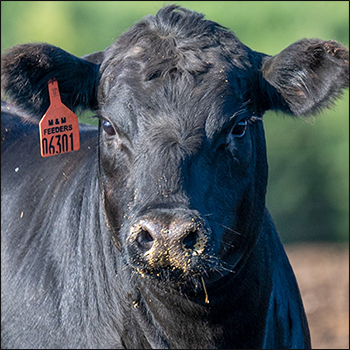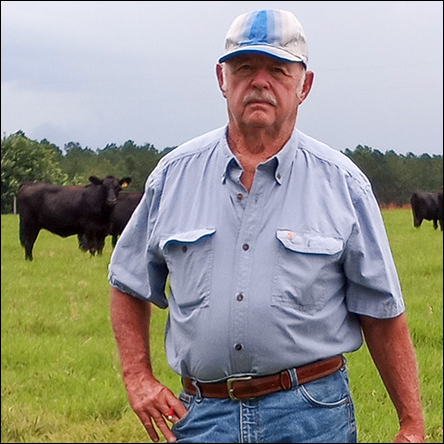News & Notes
Industry tidbits from around the country.
Feeder-calf sales to feature AngusLink
Two sales featuring AngusLinkSM offerings are currently scheduled for this December.
The Oklahoma National Stockyards Co. (ONSY) at Oklahoma City will host its sale Dec. 6. To sell, cattle must be preconditioned, including weaned 60 days and vaccinated with a herd health protocol approved by ONSY. Calves must meet the live-cattle specifications for the Certified Angus Beef® (CAB®) brand, being Angus type and predominantly black.
ONSY highly encourages enrolling cattle in AngusLink, which includes genetic verification, age and source documentation, and calves sired by bulls qualifying for the Targeting the BrandTM recognition.
For more information contact ONSY’s Kelli Payne (405-996-0435), American Angus Association Regional Manager Jeff Mafi (816-344-4266) or Oklahoma Angus Association representative Roger Wann (940-727-8492).
The Illinois Angus Association will host an Angus feeder-calf sale Dec. 2 at the Fairview Sale Barn, Fairview, Ill. For more information contact Fairview Sale Barn Manager Jake Fidler (309-224-2226), Illinois Angus representatives Joel York (618-562-2714) or Bradley Wolter (618-830-3564), or American Angus Association Regional Manager Casey Jentz (608-234-1998).
Register for Angus Convention
The American Angus Association invites Angus members, commercial producers and beef industry professionals to the 2021 Angus Convention and Trade Show in Fort Worth, Texas, Nov. 6-8. The event will provide three days to make connections, find solutions and be inspired to foster operational growth and personal leadership.
Commercial cattlemen are specifically invited to the “Capturing Value” session, a first-of-its-kind for the program, offering perspective on the future of the feeder-cattle marketplace. Industry professionals including Doug Slattery of Prime Pursuits, Paul Dykstra of Certified Angus Beef, Kelli Payne of the Oklahoma National Stockyards and a representative from Superior Livestock Auction will provide insight from their respective sectors. Engage with panelists during a social question-and-answer hour following the session.
 |
“The AngusLink team is excited to offer this opportunity to commercial producers for the first time ever,” says Troy Marshall, director of commercial industry relations. “We invite producers to attend all educational sessions, but we created the Capturing Value panel to help directly benefit those in the feeder-calf business.”
From cattle handling to the latest in genomics, educational sessions will offer management insights to apply at home. Learn from industry professionals during Angus University-sponsored breakout sessions and get hands-on education at the cattle demonstration area.
Learn more about the convention sessions, speakers, tours and more at www.angusconvention.com.
Byproduct values adding to carcass prices
Year-to-date steer and offal values climbed $6.01 per hundredweight (cwt.) to $15.14 per cwt. the week of Aug. 20, according to the Daily Livestock Report published by the Steiner Consulting Group. The highest of the year, it was nearly double the price of a year ago and was 43.5% higher than the five-year average. Cheek meat had gained about $60 per cwt.; tripe had gained about $60 per cwt.; edible tallow reached $72.25 per cwt.; and tongues had more than doubled to $900 per cwt. Hide values, the highest in three years, included several categories reaching above $71 per cwt.
At $15.83 per cwt., the cow byproduct value more than doubled what it was last year and was nearing the $16-per-cwt. mark reached in 2014.
To see the whole summary, visit www.dailylivestockreport.com and access Vol. 19, No. 169.
Special issue to focus on sustainability
Sustainability. That term has brought more questions than answers out in cattle country the past few years. What does it mean? Why does it matter? What are the long-term business implications, and what can producers do?
“More and more businesses are being required to not only define this word, but document their own sustainability story,” says Julie Mais, editor of the Angus Journal. “We see new announcements every day of companies going carbon neutral or setting up metrics. We know our members are savvy entrepreneurs and leaders in the industry — and, in turn, are asking these questions for themselves.”
That’s why the Angus Journal team is exploring the topic in a special issue in January 2022. Subscribers of both the Angus Journal and the Angus Beef Bulletin will receive the piece that will dive into the definitions and terms, the business landscape for sustainability and practical tips for cattlemen who want to capitalize on the movement.
For more information contact Mais at jmais@angus.org.
Crop residue exchange
With dry conditions in much of the western half of the United States, reports of livestock producers looking for fall and winter forage are accumulating. The University of Nebraska–Lincoln Crop Residue Exchange (http://cropresidueexchange.unl.edu) is a free online tool designed to link cattle producers to other producers with available grazing resources.
Crop producers who have previously listed crop residue available for grazing are encouraged to log in and update their listings for the 2021-2022 fall and winter grazing season. Producers new to the exchange are encouraged to consider utilizing it to connect with livestock producers to create a mutually beneficial relationship.
The exchange makes it possible for producers in Nebraska, Iowa, Missouri, Kansas, Colorado, Wyoming and South Dakota to list fields of crop residue, pasture and other forage resources they have available for grazing and for cattle producers to connect with them.
Livestock producers looking for forage resources can easily search the database for grazing available within a radius for the location of interest. Contact information attached to each listing is viewable only to those logged into the exchange website. Producers can save their searches and receive email notifications if listings become available that match their search criteria.
Visit the exchange at https://cropresidueexchange.unl.edu.
Packers & Stockyard Act guidance
In August, USDA issued guidance and planned to update regulations for the buying and selling of livestock based on a Trump administration rule announced in December 2020, reports the National Pork Producers Council (NPPC). “Frequently Asked Questions on the Enforcement of Undue and Unreasonable Preferences under the Packers and Stockyard Act” is available online at https://www.ams.usda.gov/rules-regulations/packers-and-stockyards-act/faq.
According to NPPC, in June, USDA announced steps it would take to enforce the Packers and Stockyards Act (PSA), including proposing a new rule to strengthen enforcement against unfair and deceptive practices, undue preferences and unjust prejudices and reproposing a rule to clarify that parties do not need to demonstrate harm to competition to bring an action under the PSA.
NPPC voiced concern about that provision, noting USDA wrote a similar rule during the Obama administration even though Congress considered and rejected such a provision during debate on the 2008 Farm Bill.
“Additionally, eight of the U.S. Court of Appeals’ 13 circuits have held that harm to competition must be an element of a PSA case,” NPPC reports.
APRI farm income outlook released
“Higher commodity prices contribute to a sharp increase in U.S. net farm income in 2021,” projected Pat Westhoff, director of the Food and Agricultural Policy Research Institute at the University of Missouri (FAPRI-MU), in the institute’s September 2021 analysis of farm income. “Under current policies, farm income could drop again in 2022, as government payments decline and production expenses continue to rise.”
The report utilized commodity supply, demand and price projections from the FAPRI-MU baseline update released in early September 2021 (FAPRI-MU Report #04-21, available at www.fapri.missouri.edu).
Here are a few projections from the analysis:
Projected 2021 net farm income reaches the highest level since 2013. Relative to 2020, a sharp increase in receipts from sales of crop and livestock products more than offsets the effects of higher production expenses and reduced government payments.
At $122 billion, projected 2021 net farm income exceeds that reported by the Economic Research Service (ERS) by several billion dollars. FAPRI-MU estimates higher receipts for corn, soybeans and other crops.
Total projected government spending on farm-related programs reaches a record $52 billion in fiscal year (FY) 2021. Spending on pandemic-related programs accounts for most of the outlays.
Under current policies, government outlays drop to $22 billion in FY 2022, and government payments to farmers fall from $29 billion in calendar year 2021 to $6 billion in 2022. Conservation programs account for most 2022 government payments.
Projected market prices for several crops peak in the 2021-2022 marketing year. As a result, feed-grain and oilseed market receipts decline after 2021, but remain well above the levels of 2020.
Receipts for cattle, dairy and poultry all continue to increase each year.
Higher costs for feed, purchased livestock, fertilizer and other farm inputs raise farm production expenses by $27 billion in 2021, and a smaller increase is projected for 2022.
In 2022, net farm income declines by $23 billion and net cash income falls even more sharply. Reduced government payments and higher production expenses explain the decline.
In later years, projected net farm income remains fairly steady in nominal terms at just under $100 billion each year. After adjusting for inflation, real net farm income declines each year, and the projected value in 2026 is similar to that in 2019.
Rising asset values and slower growth in debt reduce the sector’s debt-to-asset ratio in 2021 and 2022, temporarily reversing the trend of previous years. Lower projected farm income halts the rise in farm real-estate values in 2023, and the debt-to-asset ratio again begins to increase.
In contrast to the 2021 FAPRI baseline prepared earlier this year, these estimates do not consider market uncertainty. Small proportional changes in market receipts or production expenses can dramatically change the outlook for net income.
For more information visit http://www.fapri.missouri.edu or contact Westhoff at westhoffp@missouri.edu.
Cattle producers earn Cattle U honors
During this summer’s Cattle U and Trade Show in Dodge City, Kan., High Plains Journal presented the first-ever Cattle U awards.
Producers were nominated by fellow cattlemen and women.
Receiving recognition were:
- Cattle U Cattlewoman of the Year award: Lorna Marshall, vice president of Select Sires Beef Genetic Program, Saint Joseph, Mo.
- Cattle U Cow-Calf/Ranch award: Bob Davies, Davies Ranch, Liberal, Kan.
- Cattle U Young Cattleman of the Year: Trey Wasserburger, TD Angus at Rishel Ranch, North Platte, Neb.
- Cattle U Feeder/Feedlot of the Year award: Sam Hands, Triangle H, Garden City, Kan.
- Cattle U Stocker of the Year award: Brent Diel, Kiowa, Kan.
Awards were sponsored by Croplan and Central States Testing. Nominations for 2022 recognition are now open at the event website: www.cattleu.net.
